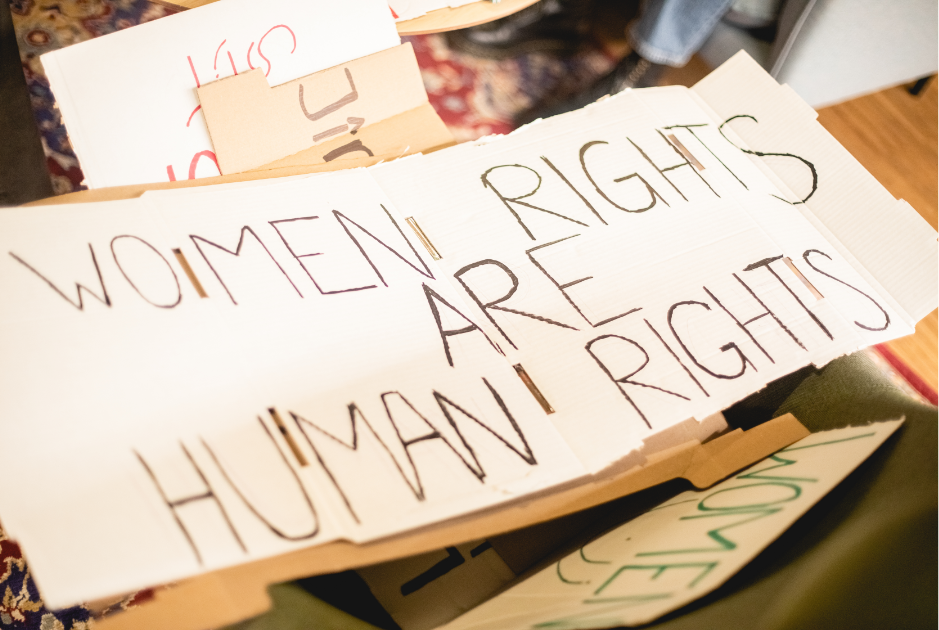Right now, the kids of Bella Bella seem to be doing pretty great.
Photo from Qqs Project Society, used with permission.
Bella Bella is a small town on an island off the coast of British Columbia, surrounded by the Great Bear Rainforest. You could walk from one end of the town to the other in about 15 minutes. The only way in is by boat or plane.
The town is part of the native Heiltsuk Nation, and the kids there get plenty of opportunities to connect to their heritage and lands because of this. During the fall, for example, the town hosts a salmon festival, and kids learn to fillet, smoke, and barbecue the large, snaggle-toothed fish. At other times, they might go out into the rainforest or learn traditional stories.
Yep: all in all, Bella Bella looks pretty awesome.
But it hasn't always been this way.
In the early 1970s, Bella Bella was in a bad way. The local fishery, the town's main source of income, was failing. There were deep social problems and alcoholism.
Worse yet, the town's very identity as Heiltsuk was under attack. For decades, the Canadian government had been banning key cultural ceremonies and removing kids from their homes or placing them in often-abusive residential schools in an attempt to Europeanize them.
A residential school circa 1945. Students were often severely punished if teachers caught them expressing their native culture or speaking their native language. University of Algoma/Wikimedia Commons.
The teenagers in the town weren't immune to this one-two punch. With a fractured culture, a general feeling of distrust of anything to do with the government, and few job prospects, only about one student in 50 was completing school.Maclean's reports that the town had one of the highest youth suicide rates in the country.
Why? Because when you set out to destroy a people's identity, it makes it hard for that community to flourish.
The town realized that in order to help their kids, they had to bring back that sense of identity and history.
One of seeds of this change was a government worker named Larry Jorgenson. Jorgenson had previously helped reorganize Alberta's mental health department, and Bella Bella hoped he could help them too.
Photo from Qqs Project Society, used with permission.
Upon arriving, Jorgenson immediately set out helping to restore the kids' fractured connection to their territory, taking them out on long boat trips or helping them build cabins. He even persuaded local law enforcement to let youth offenders serve their sentences in the cabins — a traditional practice — rather than sending them to detention centers.
They did this for years. And in the 1990s, they gave these efforts an extra edge. The town and Jorgenson (who had since moved to Bella Bella and married into the Heiltsuk community) started the nonprofit Qqs Project Society. Pronounced "kucks," Qqs (which means "eyes") runs a science and cultural camp that helps kids connect to their heritage.
The program helps teach kids cultural traditions, gets them out of their comfort zones and into the wild, and brings in scientists, instructors, and local experts to teach the kids about the islands and coasts that make up their home.
Today, Bella Bella is a very different place.
Graduation rates top 85%. If you visited, you'd see that the kids seem to be doing well. There are still some social problems, but it's a remarkable recovery from the dark times of the early '70s.
Jess Housty, communications director at Qqs and Jorgenson's daughter, says one of the coolest things is that a lot of the kids who were originally helped by Jorgenson and Qqs are now coming back as adults to work as camp counselors, community leaders, researchers, and resource managers.
The town itself seems to be doing better, too. The Heiltsuk have taken over local resource management, and ecotourism is bringing in new revenue. People are coming from all over the world to see the Great Bear Rainforest, its grizzlies, and the rare white Kermode bears.
The Kermode bear, or spirit bear. Photo from iStock.
Identity is a huge part of community, but we often don't think about it.
There are many other communities around the world like Bella Bella that are also dealing with this problem of reclaiming their identities.
But Bella Bella shows that when people are able to reconnect to both their heritage and the world around them, amazing recovery is possible.





 What was I doing again?
What was I doing again? A space waitress at work.
A space waitress at work.  Waking Up Funeral GIF
Waking Up Funeral GIF Rihanna Nails GIF
Rihanna Nails GIF Yoga pants.Image via Canva.
Yoga pants.Image via Canva. Our natural lashes are nice just the way they are!
Our natural lashes are nice just the way they are! One step forward, many steps back. Image via Canva.
One step forward, many steps back. Image via Canva.  Homelessness is especially rampant on the West Coast.Image via Canva
Homelessness is especially rampant on the West Coast.Image via Canva